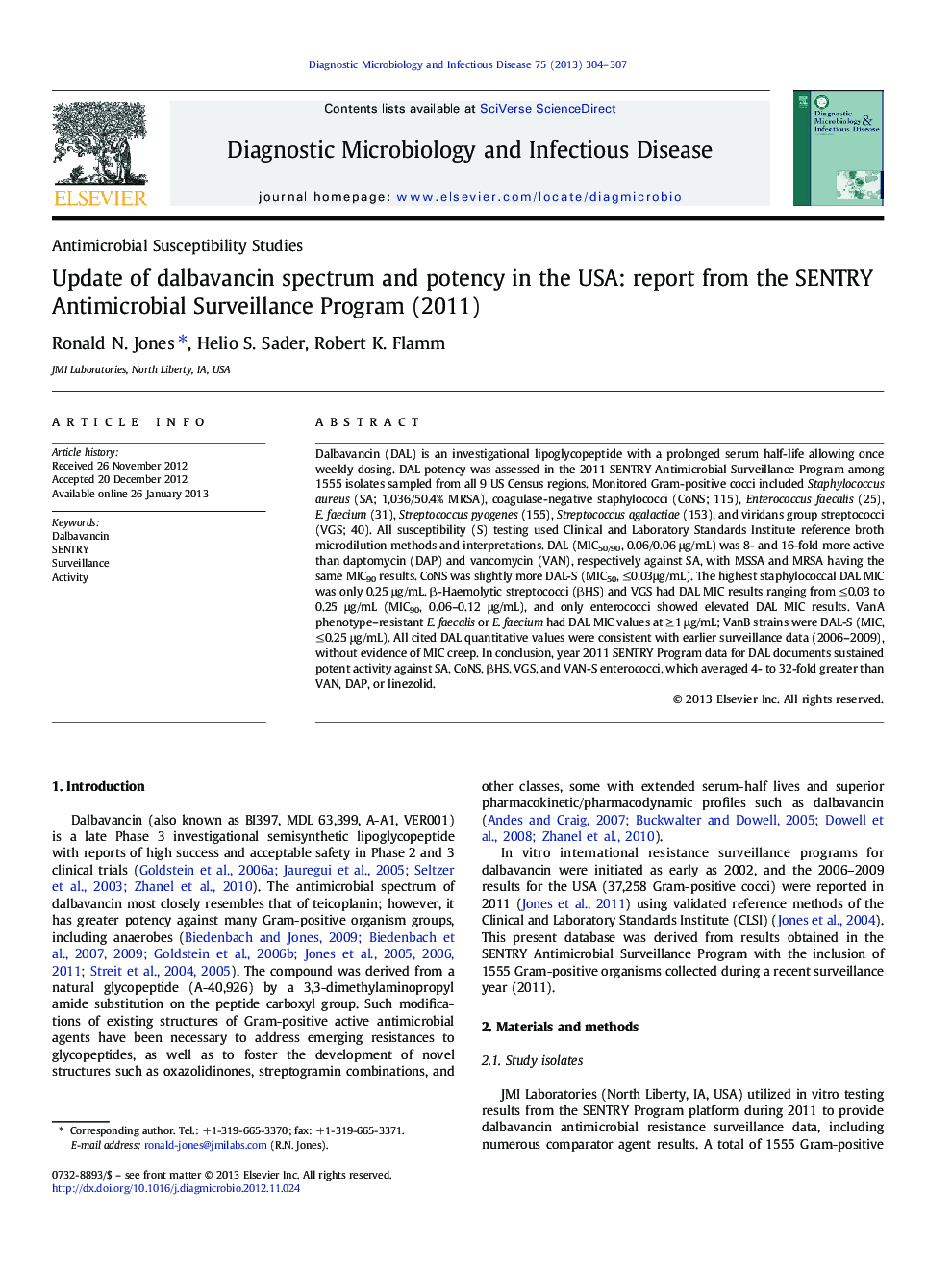| Article ID | Journal | Published Year | Pages | File Type |
|---|---|---|---|---|
| 6116176 | Diagnostic Microbiology and Infectious Disease | 2013 | 4 Pages |
Abstract
Dalbavancin (DAL) is an investigational lipoglycopeptide with a prolonged serum half-life allowing once weekly dosing. DAL potency was assessed in the 2011 SENTRY Antimicrobial Surveillance Program among 1555 isolates sampled from all 9 US Census regions. Monitored Gram-positive cocci included Staphylococcus aureus (SA; 1,036/50.4% MRSA), coagulase-negative staphylococci (CoNS; 115), Enterococcus faecalis (25), E. faecium (31), Streptococcus pyogenes (155), Streptococcus agalactiae (153), and viridans group streptococci (VGS; 40). All susceptibility (S) testing used Clinical and Laboratory Standards Institute reference broth microdilution methods and interpretations. DAL (MIC50/90, 0.06/0.06 μg/mL) was 8- and 16-fold more active than daptomycin (DAP) and vancomycin (VAN), respectively against SA, with MSSA and MRSA having the same MIC90 results. CoNS was slightly more DAL-S (MIC50, â¤0.03μg/mL). The highest staphylococcal DAL MIC was only 0.25 μg/mL. β-Haemolytic streptococci (βHS) and VGS had DAL MIC results ranging from â¤0.03 to 0.25 μg/mL (MIC90, 0.06-0.12 μg/mL), and only enterococci showed elevated DAL MIC results. VanA phenotype-resistant E. faecalis or E. faecium had DAL MIC values at â¥1 μg/mL; VanB strains were DAL-S (MIC, â¤0.25 μg/mL). All cited DAL quantitative values were consistent with earlier surveillance data (2006-2009), without evidence of MIC creep. In conclusion, year 2011 SENTRY Program data for DAL documents sustained potent activity against SA, CoNS, βHS, VGS, and VAN-S enterococci, which averaged 4- to 32-fold greater than VAN, DAP, or linezolid.
Related Topics
Life Sciences
Immunology and Microbiology
Applied Microbiology and Biotechnology
Authors
Ronald N. Jones, Helio S. Sader, Robert K. Flamm,
